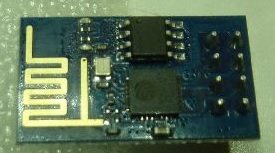At first you have to make a plan how to explore the ESP8266. Following decisions must be made:
- Which operating system for tools and development environment is preferred? – It seems there is better support for Linux, but also some tools for Windows 8 are available.
- Which kind of firmware should be used? There are at least 6 options …
- Which Development kit should be selected? Again, some options exist…
I decided for Windows in first step, Linux based tools will be tested in second phase. Furthermore, it was fixed that I will start with the development board. The integrated USB-TTL adapter will save some trouble with connecting all ports as well with the voltage of 3.3V.
Here you can find a list of available firmware: http://forum.sh-hackspace.org.uk/t/list-of-esp8266-firmware/98
The official AT firmware supports AT commands similar to former modem commands. See here for a list of AT commands: https://nurdspace.nl/ESP8266
tI is really a high value expirience to check this firmware. I flashed the recent version from https://github.com/esp8266/esp8266-wiki/tree/master/sdk
Typically a flash tool (esp8266_flasher.exe) is part of the firmware download (zip file). Otherwise use this link: http://bbs.espressif.com/download/file.php?id=189
Becfore flashing you need to install the windows driver CH340 for development board: http://www.arduined.eu/ch340-windows-8-driver-download/
How to send these AT commands to the board?
 (picture from ESPlorer homepage)
(picture from ESPlorer homepage)
Here I can recommend the ESPlorer tool from http://esp8266.ru/esplorer/
It provides a command line mode for AT command as well as a button based concept for executing several operations.



